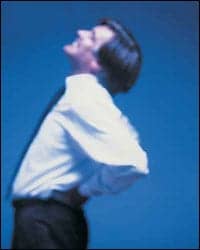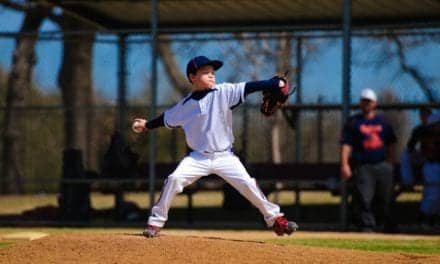For years, researchers have dound that resistance exercise training–such as weightlifting, in which muscles work against gravity or another force–can be an effective way to fight the debilitating muscle loss caused by aging. But many older people are unable to get the full benefits of such training because they have arthritis, which can prevent them from lifting enough weight to stimulate muscle growth. And, while younger men and women continue to produce significant amounts of muscle protein for hours after a resistance exercise workout, seniors receive a smaller post-workout benefit.
University of Texas Medical Branch at Galveston researchers have determined that moderately and temporarily restricting the flow of blood through muscles–a practice adopted by bodybuilders who noticed that it made light weights feel heavier–can be combined with low-level resistance exercise training to produce muscle-mass increases in older men.
"We think that this may be a novel treatment for older people who need to bring their muscle mass back up," said UTMB physical therapy professor Blake Rasmussen, senior author of a paper on the investigation ("Blood flow restriction exercise stimulates mTORC1 signaling and muscle protein synthesis in older men") appearing in the May issue of the Journal of Applied Physiology, in a statement. "It could also be used for patients who have had surgery and aren’t capable of lifting enough weight to keep their muscles in shape, or for people who have arthritis or other conditions that make lifting heavy weights a problem."
The UTMB investigators studied changes in the thigh muscles of seven older men (average age 70) when they performed 4 minutes of low-resistance leg extension exercises both with and without inflatable cuffs that reduced blood flow out of the muscles. Muscle protein synthesis was measured in each of the men by monitoring changes in a chemical tracer infused into the bloodstream. In addition, a series of biopsies yielded muscle samples that were analyzed to track alterations in biochemical pathways critical to muscle growth.
"We saw that when we put the cuffs on, they responded similarly to young people doing traditional high-intensity resistance exercise," said UTMB graduate student Christopher Fry, the lead author of the paper. "The low-intensity exercise produced increases in protein synthesis, and activated two cellular pathways that stimulate protein synthesis and muscle growth in the post-exercise period."
Exactly how restricting blood flow in the muscles generated these effects remains unknown, although Rasmussen and Fry speculated that either an improved ability to activate Type II muscle fibers or a response to the sudden surge of blood into the muscles when the cuffs were released could be responsible. Whatever the mechanism, Rasmussen said, "we think it’s an exciting potential new rehabilitation tool."
"You could use this following ACL knee surgery or hip fracture surgery, for example," Rasmussen said. "In the first few weeks after ACL surgery, the joint just won’t allow you to lift heavy weight. So instead, you could use a really light weight with a restriction cuff, which may prevent the muscle loss that you normally see following knee surgery."
Other authors of the paper included graduate student Erin Glynn, assistant professor Micah Drummond, postdoctoral fellow Kyle Timmerman, research scientist Shaheen Dhanani and professor Elena Volpi, and Satoshi Fujita and Takashi Abe of the University of Tokyo.
The National Institute of Arthritis and Musculoskeletal and Skin Diseases, UTMB’s Institute for Translational Sciences Clinical Research Center, the UTMB Center for Rehabilitation Sciences and Sato Sports Plaza provided support for this research.
[Source: Eureka Alert on behalf of the University of Texas Medical Branch at Galveston]



